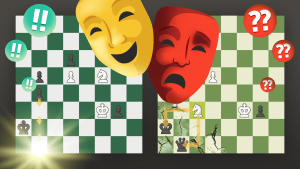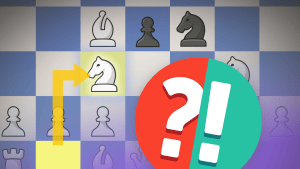
A Rook or Two Minor Pieces? Part Two
It is common knowledge that in openings, as a rule, it is not a good idea to give up two minor pieces for a Rook and a pawn. The explanation is very simple: there are not many open files for your 'extra' Rook to work on and therefore such a sacrifice is usually unsound. But from the other side, there are a bunch of openings where a 'trade' of a pair of minor pieces for a Rook and a pawn is part of the whole opening strategy. Take a look at so called Dilworth Variation of the Ruy Lopez:
I guess GM Yusupov didn't receive the memo about two minor pieces being better than a Rook and a pawn since he used this variation in many of his games.
You can argue that in the above-mentioned game White pieces were pinned and his King was vulnerable. But what about the next theoretical line in the Philidor Defense?
The similar situation can be seen in the early middle game. Theoretically two minor pieces should be better than a Rook and a pawn, but it is not always the case:
If such a sacrifice of two minor pieces for a Rook and a pawn is indeed no good, then we have a suspiciously large number of exceptions to the rule.
In my opinion, the best answer for this problem was given by Mikhail Tal in his annotations to his game vs. Johannessen, which we analyzed in the first part of this article. He wrote: " In my opinion a sacrifice like this doesn't require any calculation, it is enough just to take a look at the resulting position to see that the sacrifice should be sound. And what kind of sacrifice are we talking about here? Black gets two minor pieces for a Rook and a pawn, which, according to most textbooks is just an extra half of a pawn."
I am not sure what Tal meant about "extra half of a pawn" since when I was learning chess my textbooks were saying that a Rook was worth 5 pawns and a minor piece is worth 3 pawns, but I like his idea a lot. Just look at the resulting position and if you have better placed pieces and an initiative, then you'll be better regardless if you have two minor pieces or a Rook! And this is why it is so difficult to answer this simple question frequently asked by beginners. In order to evaluate the sacrifice you need to evaluate the resulting position correctly, which is something beginners cannot do properly in many cases.
to be continued...

